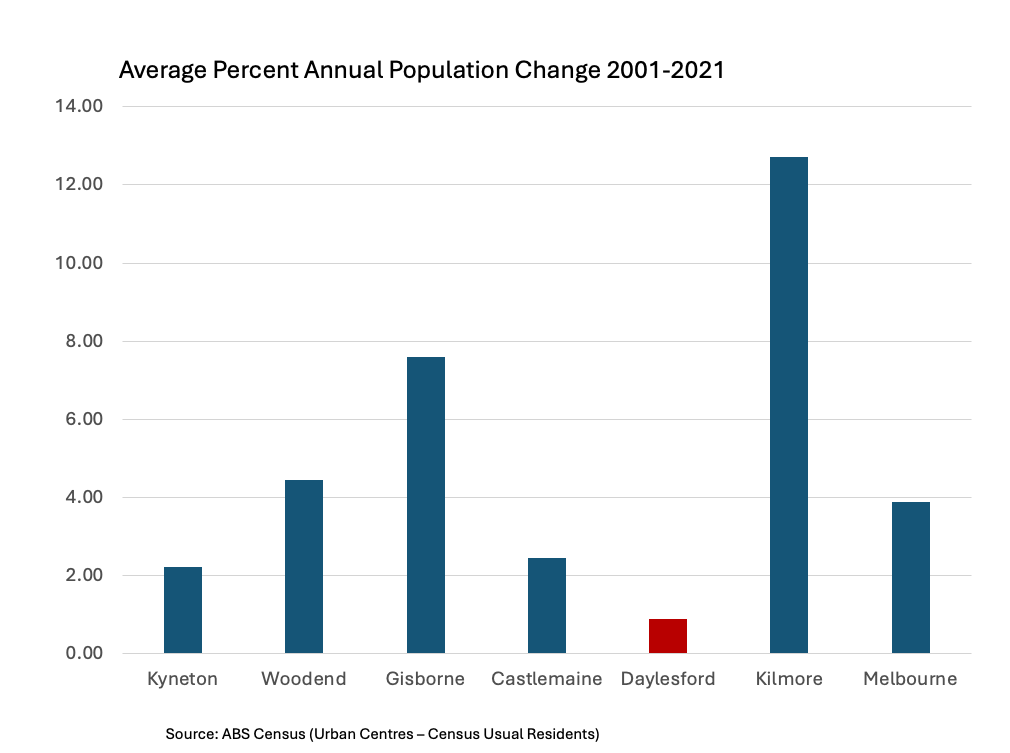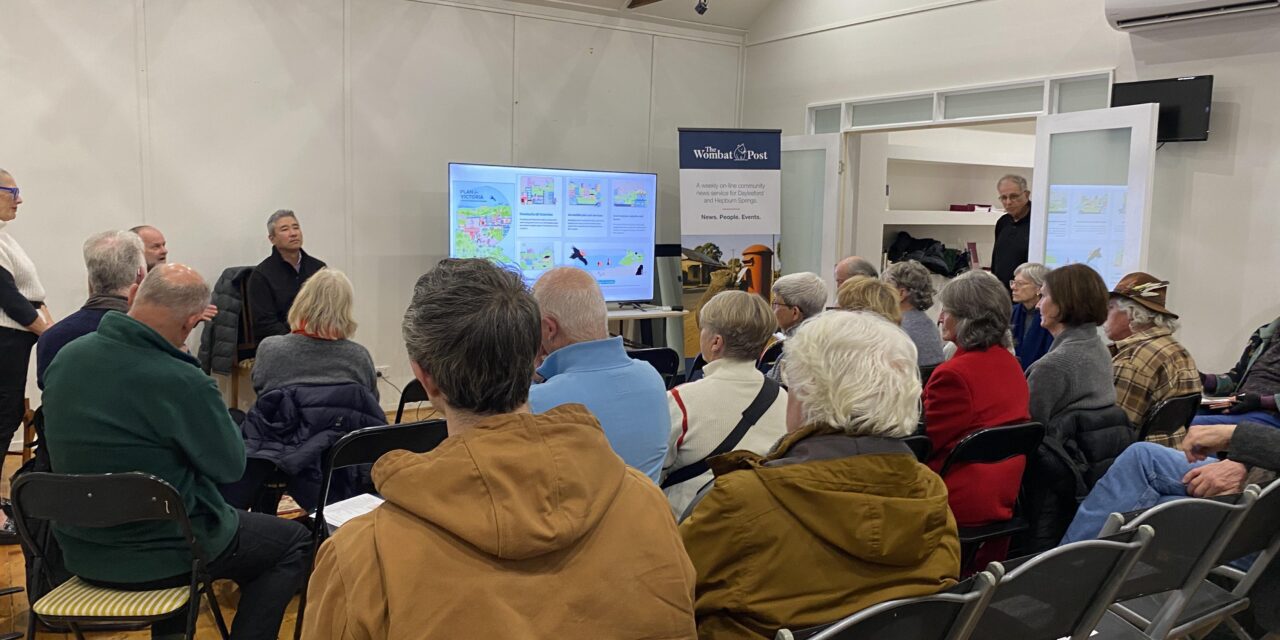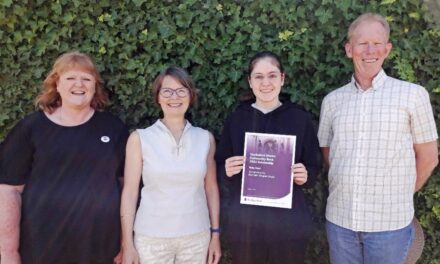At last week’s very well attended Daylesford Conversation on the Future of Daylesford as a Tourist Town it was argued that Daylesford is not over touristed but it needs to plan the sort of tourism it wants and, in particular, it needs to manage its housing needs to avoid problems in the future.
Andrew Butt, Professor of Sustainability and Urban Planning at RMIT University, pointed out that relative to nearby population centres, Daylesford’s population growth was actually low. As the figure he presented (below) shows, Woodend, Gisborne and Kilmore have grown more than four percent in the past 20 years. That’s faster than Melbourne.

On the other hand Daylesford has grown by only about 1 percent, reflecting, in part, that Daylesford is not on a major transport route and far enough away from Melbourne to make commuting more of a challenge. However, Professor Butt noted that the there had been a significant increase in the proportion of people who work from home, particularly since the pandemic and that this may affect Daylesford into the future.
Ron Torres, Director of Development and Community at Hepburn Shire Council, emphasised that Council planning was alive to the issues of growth and tourism. He noted that it was difficult to find affordable housing in Daylesford and that future planning will need to address this issue. Part of this challenge is to balance the supply of short term rental accommodation for visitors with the housing needs of residents, including workers in the tourism industry.
On questioning from the audience, Mr Torres agreed that in addition to incentives, more direct investment and prescriptive regulatory measures are likely to be required in the future to get the housing balance right.
Steve Wroe, the CEO of Destination Central Victoria, was unable to attend but submitted a number of points for the discussion. The MC Robyn Rogers noted on his behalf that it is obvious that tourism has pros and cons.
Unfettered, it can cause significant ‘externalities’ as economists call them – negative consequences like painful traffic jams, bothersome noise, increased income disparity, house availability etc.
In his points, Mr Wroe argued that Daylesford is not over-touristed. But it could be. He noted that there were other Australian destinations that were, and they are not that pleasant to visit as a result.
The good points about the Daylesford and Hepburn region are that:
- It’s number one – or just number two, depending on how you view the stats – in terms of revenue generation. Tourism pumps over $350m into our little Shire.
- It creates more jobs than any other sector, by a long way: over 1000 jobs. The next highest sector is Heath Care & Social assistance at 798.
- It provides a nice place to live, with vibrant townships, busy businesses open daily.
- It helps with environmental stewardship as city folk discover and become advocates for nature as they walk in the Wombat Forest.
But Mr Wroe argued that strategies must be in place to mitigate the negative impacts of visitation. At Destination Central Victoria (formerly Daylesford Macedon Tourism), he pointed out that they are guided by a strategic plan, the Destination Management Plan.
He noted a few of the many strategies, most of which are designed to ease the impacts of increasing levels of visitation:
- Advocate for investment in nature-based product: get people into the bush
- Develop itineraries that support dispersal across the region.
- Nature-based marketing activity.
- Promote cycling experiences, particularly mountain bike and gravel that take people out of the towns.
- Develop a Mineral Water Experience Trail (partly done in conjunction with HSC: new website etc).
- A strategic approach to events, aiming to spread evenly throughout the year, and appealing to different markets at different times.
- Support First People’s projects that take people out of the towns and into ‘country’.
- Development of an ‘arts trail’ across the region.
- Advocate to improve transport options.
To put it simply, the aim should be to disperse visitors across the region by promoting our many assets outside the township of Daylesford – target visitors who want to do more than wander Vincent St and prefer to get into nature and small towns, and are, frankly higher income. Mr Wroe noted that this sounds elitist but if you have ‘high yield’ visitors, you need fewer of them. Hepburn’s overnight visitors spend well over 20% more than the average regional tourist.
So Mr Wroe argued that tourism is a double edged sword. But it was his view that we are in a pretty sweet spot and sensible management will ensure that this continues.





